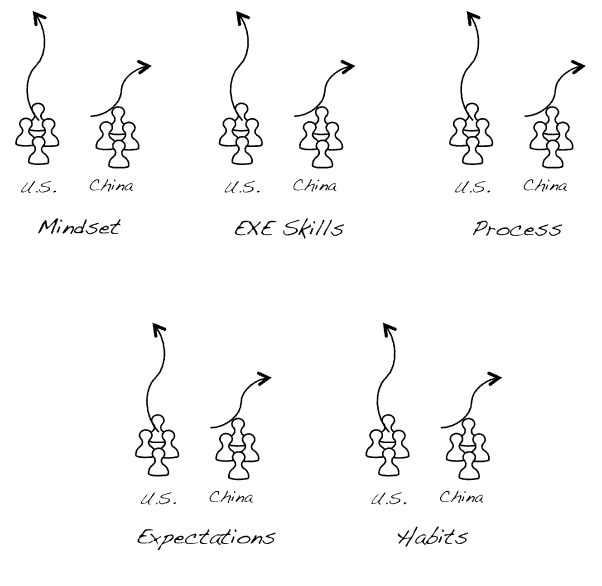The iBook is now live on Japan iBookstore, both English and Chinese language versions.
My Talk on March 4th at Hanhai Investment Company Campus
Please make it if you can. Hanhai Investment is on 97 East Brokaw Road in San Jose (Silicon Valley). The event starts at 6pm and runs for about an hour and a half. I’ll try to keep the presentation to about 20 to 25 mins leaving plenty for Q & A. Here is the event link with full address of the location included.
“Yoshida in China: Managing Sino-U.S. disconnects”

Junko Yoshida, of EETimes reviewed this book and said something that aptly describes what I was trying to do with this book: “At a time when China observers in the U.S. struggle to unlock the mysteries of the Chinese market through academic books, this is probably the first practical volume by an engineering and marketing manager that targets his peers working for U.S.-China companies.”
When You Map China-US Disconnect Patterns To The Specifics of Mindset, Process, EXE Skill, Expectations & Habits…
Then all of a sudden, you are no longer wallowing in the generalities of some vague China-US differences. Now your management challenge becomes more tangible; it begins to be specific.
The arrows in the above picture – pointing in the opposite directions – are showing that it is very likely that your teams in China and in the U.S. are operating with a misaligned understanding of how the company expects them to operate.
In my experience, tracing these misalignments to specific qualities – such as the mindset, the execution skills, the process, the expectations and the habits in the company – is a lot easier, and effective, way to adjust these misalignments. But we often make the mistake of coming at them with a big old “China-US cultural differences” paradigm, which just makes the issue so much more difficult to even define.
Your Management is Probably Considering China Quite Seriously Already, Even if You Are Not Thinking it, Yet
If you are in the U.S., and working in a technology company, you already know that you can’t ignore the China factor.
Think about it this way. You know that your big customers are moving into China already. No brainer here.
But you also know that staying close to the customer is the best way to understand their product requirements and get their business.
So, the logical question your management will ask is, “Should we move our development teams to China too, to stay close to the customer?”
So, what does this mean to you?
How would you, as a professional, continue to keep your job?
To answer that question, you should be asking the next logical question, “In what ways you are going to be relevant to your manager, to your company? How are you, as a professional, going to keep your skillset relevant?”
Guess what, this is the same question I am asking for myself. This book came out of that exercise.
It All Starts With A Sound Strategic Move, Then…
What Are The Disconnect Patterns I Covered in The Book
When I began making outline for the book, I came up with something like seventy-six, yes 76, differences that could be categorized as disconnect patterns. I whittled them down to twenty that I discuss in the book. Here is a list.

